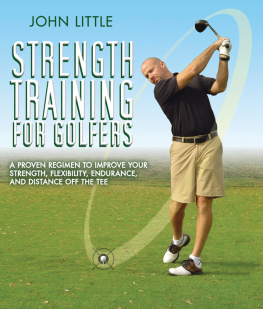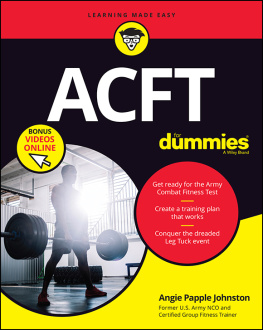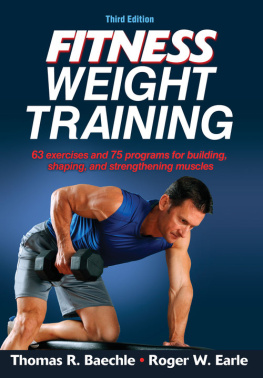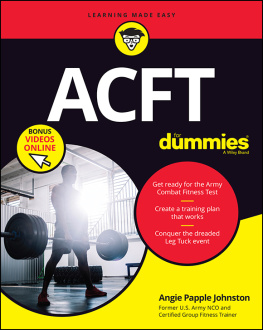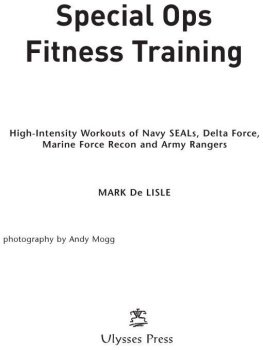Contents

About the Author

Christopher Bonilla is an ACE Certified Personal Trainer and NSCA Certified Strength and Conditioning Specialist, with experience training a variety of athletes since 2014. As an athlete, he competed in Olympic weightlifting for six years before transitioning to a more well-rounded fitness style that better suits the requirements of the military. At the time of this writing, he is finishing his M.S.S. in Sports Health and Fitness from the Unites States Sports Academy. He currently runs Collar2Collar Weightlifting , a remote fitness training service specializing in overall fitness coaching and ACFT-specific preparation.
He has been a member of the Army National Guard since 2012 when he enlisted as an Infantryman for the Maryland National Guard. After commissioning in 2017 as a logistics officer, he transferred to the Nevada National Guard, where he currently serves.
Introduction 4
Chapter 1: What the ACFT Measures 5
The Energy Systems 5
The Qualities of Athletic Performance 8
The ACFT 11
Chapter 2: Programming Guidelines 14
Training Principles 14
Programming Variables 18
Periodization 27
Chapter 3: Training the Physical Qualities 30
Maximum Muscular Strength 30
Maximum Muscular Power 32
Local Muscular Endurance 34
Aerobic/Anaerobic Capacity 35
Chapter 4: Sample Programs 38
Aerobically Trained Soldier 38
Strength Trained Athlete Soldier 69
Bibliography 100
Introduction
Rather than just throwing a bunch of programs in your face and sending you on your way, I believe that you will get much more from this ebook if you understand the underlying principles behind training, and how to apply them into your preparation for the Army Combat Fitness Test (ACFT). This way, not only will you be able to make modifications to the sample programs in this ebook to individualize them further to meet your needs, but once you are done with them, you will be armed with the knowledge to create programs on your own, either for yourself or for your unit. For this reason, the first few chapters will cover the basic scientific concepts and principles that dictate performance adaptations and programming. While I know you did not purchase this with the intent of reading a science textbook, I urge you to make an effort to understand the basics outlined in the following chapters. In exchange for your patience, I have included only the most relevant concepts that you can go and use in your daily training. If you sincerely are not interested in any of the science, and simply want a well thought out training program, feel free to skip ahead to the sample programs, I won't be offended I promise! I hope you enjoy!
Chapter 1: What the ACFT Measures
The Energy Systems
The most basic factor that determines physical performance in any situation is the metabolic pathway that our body uses to create the energy to sustain that performance. For example, the body of an ultra-distance marathon runner who needs sustained sub-maximal performance for several hours is going to produce energy in a different way than a shot-putter who requires a few seconds of very high-intensity muscular effort. Likewise, the way our muscles are fueled for the 2-mile run will be very different from how our muscles are fueled for the Standing Power Throw. This is important to understand because knowledge of these systems and how they operate will give us an idea on how to train them, and how to support them through proper nutrition. While all three energy systems contribute energy for activity of all intensities, the magnitude in which each system contributes changes drastically as duration and intensity of exercise changes.
The body's primary source of energy for bodily processes is an organic compound named adenosine triphosphate (ATP). ATP is made up of adenosine(composed of adenine and a sugar molecule called ribose), and three phosphate groups. ATP produces energy through a process called hydrolysis (Figure 1.1), in which the ATP molecule is broken down by splitting off one of the phosphate groups, becoming adenosine diphosphate (ADP). This process releases energy that can be used for things like muscular contraction. The problem with this process is that the body has minimal ATP stores, so the ability to continuously replenish ATP is essential for sustaining athletic performance. There are three metabolic pathways through which the body accomplishes this task. The system used during exercise is determined by the availability of certain resources (namely oxygen) and the intensity of exercise.

Figure 1.1
Phosphagen System
The phosphagen system provides the majority of the energy for very high-intensity exercises such as low repetition resistance training and sprinting. This energy pathway relies on the hydrolysis of existing ATP stores, with a limited ability to replenish those stores. This ability to replenish ATP is dependent on the presence of creatine phosphate(CP), which provides the free phosphate group needed to create new ATP from ADP. This limitation is one of the rationales for the use of creatine supplementation for athletes who need to perform frequent high-intensity exercise. The idea is that, with the chronic use of creatine supplementation, the athlete can increase their body's stores of CP, which will make it more effective at fueling high-intensity exercise. While this process is the quickest way for our bodies to replenish ATP and effectively fuel high-intensity activity, creatine phosphate is stored in very low quantities, and can only be the primary provider of energy for efforts lasting up to 5 seconds or so.
Glycolytic System (Anaerobic Glycolysis )
The glycolytic system, also known as anaerobic glycolysis, can be characterized as the breakdown of carbohydrate to replenish ATP without the presence of oxygen(hence anaerobic). This system becomes more involved when the duration of activity becomes longer than what the phosphagen system can support (approximately 6 seconds-2 minutes). By using carbohydrate, which is stored in the muscles as glycogen or in the blood as glucose, ATP can be re-synthesized for more extended periods. Although the replenishment is not as fast as the phosphagen system, the ability to break down carbohydrates without the presence of oxygen allows for relatively high intensities to be maintained.
Oxidative System (Aerobic System)
The phosphagen and glycolytic systems operate in an anaerobic(without oxygen) environment, and can only re-synthesize ATP through the use of creatine phosphate or carbohydrates, respectively. Once exercise duration exceeds the ability of these two systems to sustain activity, the body is forced to decrease the exercise intensity to accommodate the use of the oxidative system. The oxidative system takes advantage of oxygen's presence to oxidize (break down) carbohydrates, fats, and proteins to replenish ATP. The amount each of those macronutrients contributes to fueling exercise depends on exercise intensity, as seen in Figure 1.2. Although protein can contribute small amounts of energy, carbohydrates and fats remain the preferred fuel source for almost all activity. While the oxidative system is much slower, it can provide continual energy for very long periods of time. Due to this, the oxidative system is the primary source of energy both at rest and during low-intensity activities. Figure 1.2 illustrates the relative contributions of each energy system, and each substrate(energy source) during varying exercise intensities.



